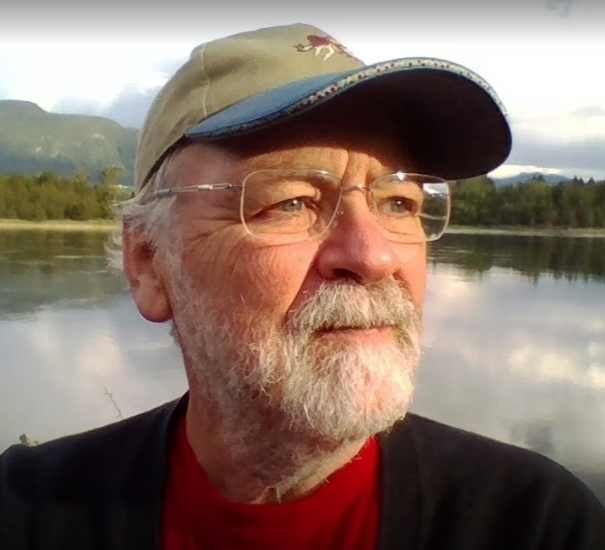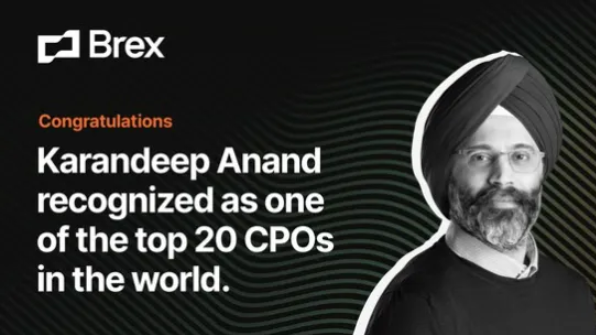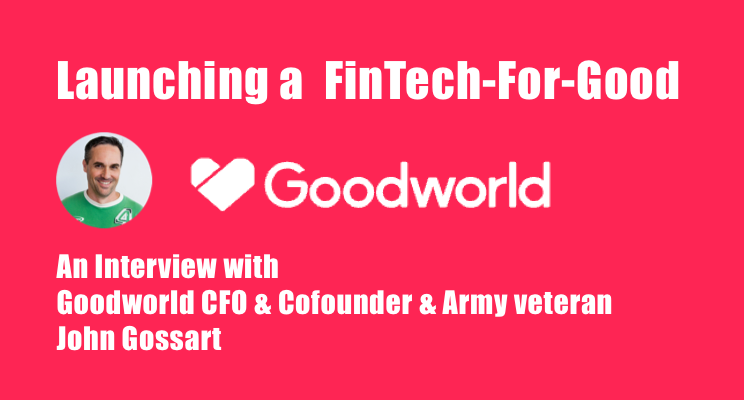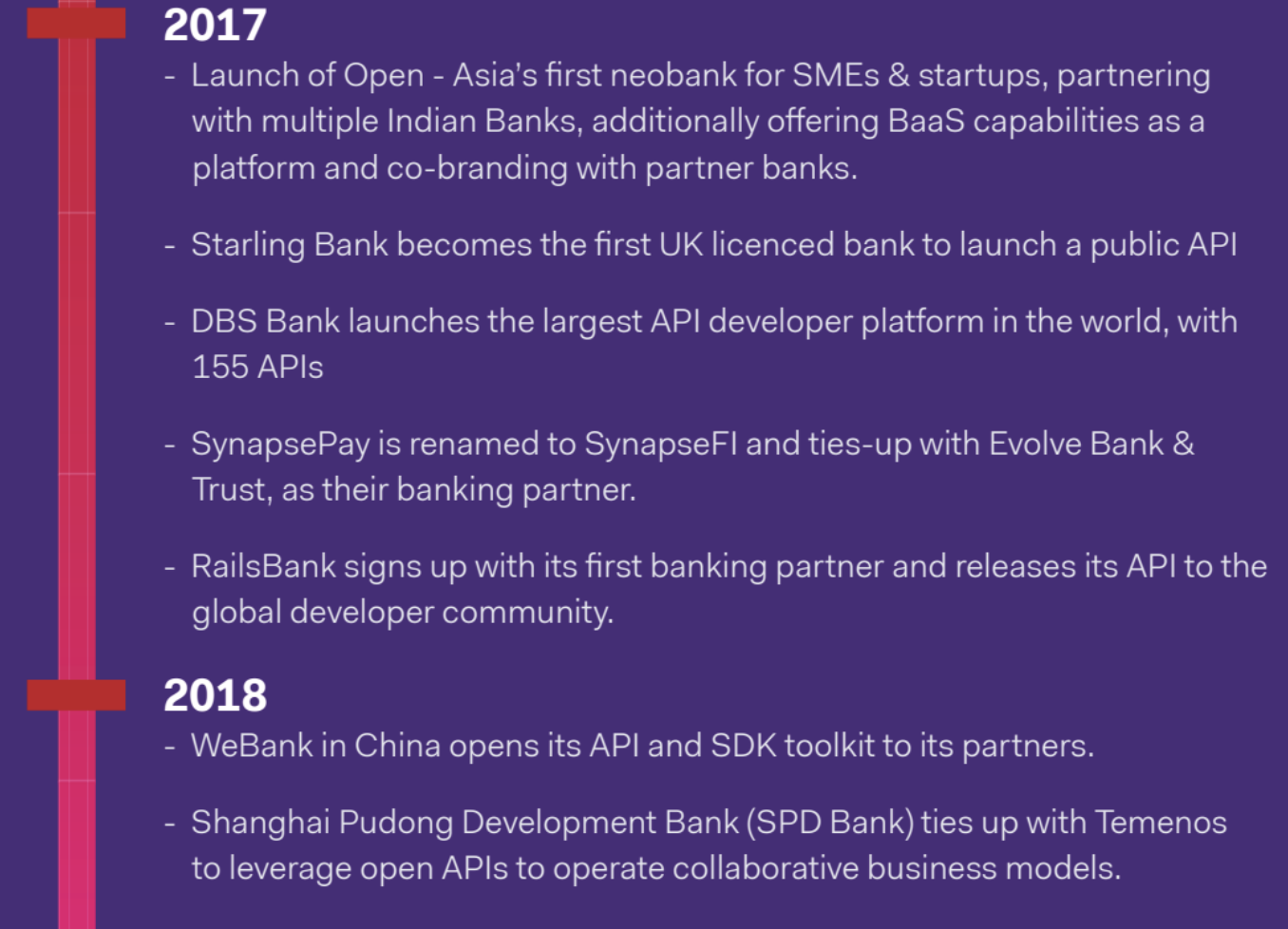Brex isn’t a card, it’s not a piece of plastic — it’s control. It’s a financial operating system for your business that turns complexity into a growth driver through automation, compliance, and revenue optimization. The proof? 25% of U.S. startups, 80% of Y-Combinator Startups, and 50% of venture firms use Brex because it’s much better than Amex and SAP — named the 2nd most disruptive company after OpenAI by CNBC.
Source: Dane Allist
Why Brex Will Win
Our product managers spend 30% of their time on sales calls
— Karandeep Anand, Brex President and Chief Product Officer
One of the most compelling interviews I’ve seen on expert innovation and the application of AI is Product School CEO Carlos Gonzalez de Villaumbrosia’s interview with Karandeep Anand, Brex President and Chief Product Officer for the last three years, that dropped this month (January 2025). Before Brex, Karandeep was the former Head of Business Products at Meta and Head of Product Management at Microsoft.
As a Silicon Valley developer, founder, and software investment banker, I’d consider Brex just about the most well-respected name in fintech for its unified global spend platform, corporate cards, expense management, reimbursements, bill pay, and travel products, and Meta the most well-respected overall by my fellow software engineers (yes, even more than Google). Karandeep’s background is best-in-class and he was recently named one of the top 20 CPOs in the world at the 2nd annual global CPO 20.
You can see why his intelligence shines. Below is an excerpt from Karandeep’s interview with Carlos on the strategy that has led Brex to 25,000 customers, 50% with global employees, including Doordash, Lemonade, Anthropic, Scale AI, Indeed, Lemonade, Allbirds, Superhuman, Robinhood, Airbnb, Coinbase, 25% of U.S. startups, not to mention 80% of Y-Combinator cohorts and over 50% of venture firms with 130% retention in 2024, tracking to $500M in revenue in 2025.
Given the speed of YC alumni company growth, and the raw volume of new alumni being created (+500 in 2025 alone, worth ~$38B in five-years) you’ll probably want the Brex IPO in your portfolio when it happens. As a still-young startup, Brex CEO Henrique Dubugras says there’s no timeline on that front yet. Last year Brian Mok left a Partner role at Andreessen Horowitz to take over as Head of Startups and Strategic Partnerships at Brex. An a16z partner leaving for Brex says a great deal about Brex’s significance and longevity in the startup ecosystem.
It’s also worth pausing to consider the significance of a seven-year-old startup capturing 80% of YC business and 50% of the venture industry. It means that the best and most discerning minds in tech, AI, and venture — the experts who advise the best founders and the founders themselves — are choosing and recommending Brex with stunning consistency for most startups, as are many of the biggest companies in the world. To do what Brex has done, you’d have to win over Garry Tan, Paul Graham, Dario Amodei, Brian Armstrong, and Alexandr Wang to name a few, a good deal of the greatest minds in the world. Karandeep had the following to say:
“We realized something critical: If you want to build a truly customer-centric product, the people creating the product need to be deeply embedded with the people selling it.
Too often, we’d see this gap where product teams would build beautiful features, but they’d hand it off to sales and assume the job was done. That disconnect was slowing us down and creating friction for our customers.
So we made a bold call — cutting 40% of our PMs. Not because they weren’t talented, but because we needed a leaner, more outcome-driven model.
The mission changed. PMs weren’t just shipping features — they were selling value. They had to own adoption and customer success. They had to be in the field, understanding objections and closing deals.
We made that tough call — halving the PM team from last November. And the immediate reaction was, ‘You can’t keep scaling. The surface area is too large. You’re running a global fintech platform — cards, expense management, travel, banking, treasury — serving everything from two-person startups to 20,000+ employee enterprises.
But guess what?
We’ve grown faster.
Shipped more products.
Delivered higher customer satisfaction.Why?
Two reasons:Lean teams move faster.
AI tools like Glean automate busy work.
Now, PMs don’t sift through documents for hours — AI tools summarize meetings and automate follow-ups. PMs focus on impact — selling the solution, not just building it.
But here’s where it gets interesting — we didn’t just cut headcount.
We re-engineered how teams collaborate.
PMs now sit with sales. Sales sits with engineering. Entire cross-functional pods.
We realized sales wasn’t just a handoff — it’s part of product validation. So we made a rule:
PMs must close the first 25 deals themselves for any new product feature before it scales.
That means PMs now hear every objection firsthand. They refine messaging directly with the sales team. No assumptions. No filter.
And it’s transformed how we build.
Sales gives immediate feedback to product.
Engineers get customer insights firsthand.
PMs don’t build blindly — they build what closes.
And the results?
Faster product iterations.
Higher win rates.
Direct revenue impact.
We’re not just faster.
We’re smarter.We stopped thinking of product as a feature machine and started treating it as a revenue engine. Every new feature? It’s designed to help us win deals.
That’s the shift. We’re not just building software. We’re building sales-driven financial tools.
And the reason we can pull this off is because we’ve got elite talent.
It takes humility and hunger to move from a traditional product mindset to one where you’re out there selling, facing objections, and owning adoption. But that’s how you build a product that wins markets.
And honestly? I think that’s why we’ve seen the acceleration we have.
You combine lean teams, outcome-driven focus, and a killer go-to-market alignment? You get Brex.”
— Karandeep Anand, Brex President and Chief Product Officer,
Product School, January 2025
Why Move Your Company To Brex
Karandeep noted that to convince a company to transition its payments, its entire expense management, its travel, and its corporate cards to Brex — to transition over all that data, reissue all those cards, and retrain all those employees — Brex doesn’t have to be better, Brex has to be 10 times better. And it is.
Talking this week to Brett Dashe, former CEO of Dashe Data and Founder and Head of Sales at ServiceUp, a fleet management software company serving companies like Apple and Sunrun backed by Tiger Global, Hearst and Chaos Ventures, which I invested in and coded the mobile app for in 2020, Brett told me why his team loves Brex: Everyone has those employees who tend to be a bit irresponsible with their corporate card, and the ServiceUp finance team can immediately spot when this happens and drop in limits or if necessary revoke a card temporarily with the click of a button. Control and insight into spending are easy and instant. That’s money to the company’s bottom line.
Far better software has allowed Brex to reach $100M ARR with its Empower™ spend management platform within a year of launch, with the same milestone reached by its Brex Business Accounts and Corporate Cards products, and Brex is only just getting started. The next 24 months will represent an immense opportunity for one of the most talented technology teams in the world. We’ve got self-driving cars giving more rides in San Francisco each month than Lyft before we’ve gotten a useful AI plugin for Excel. Why? The stakes are higher. Getting hit by a car is one thing, money is serious business: You need audit-grade accuracy.
Amex, SAP Concur — legacy financial services providers rely on the high cost of switching to keep better technology and better financial control at bay. A change to payments and expense management bogs down the finance team and creates headaches and risk: Legacy data mining, user re-training, and integration reconfiguration. Miss closing your books, and you find yourself out of compliance and filing notifications with the SEC, and investors are wondering what kind of mess they’re invested in.
Yet, the benefits of better technology are just as significant for Brex customers: as much as 4,000 hours a year (~$250K in payroll) automating documentation and reviews by a single company, $51.2B in compliant spending, 11.25 million hours of work saved by automation, $588.8M in customer rewards earned, 96% compliance rate across customers, up to 96% reduction in manual work, $75K in expenses saved by Pangea through fee elimination and expense control, 500 hours/mo. saved by Superhuman from automated expense reporting, 100% fraud prevention by Goody using virtual cards and spend limits.
Brex is way out front in AI, automation and control, and we are at tipping point where AI will become vastly more useful. Brex’s focus is on full automation, real-time compliance and fraud management, customer-centric AI tools, and AI for growth, not just efficiency. Both Brex founders Chairman Henrique Dubugras and Brex CEO Pedro Franceschi are Stanford Computer Science veterans with technology scaled from 100 employees to over 1,400 employees today by the former head of global engineering and product teams at Stripe with over 330 engineers driving the development of Brex’s AI Suite, with Brex AI-Powered Tools for CFOs launched in March 2023 and Brex Assistant in September 2023, both building on technology from OpenAI providing real-time insights into corporate spend.
Karandeep Anand described the path forward for AI at Brex from deterministic to non-deterministic use cases in three phases:
I often say the day finance professionals trust AI to touch money is the day AI has truly arrived. People are comfortable with self-driving cars, yet skeptical about AI handling financial decisions.
Why? Because the stakes are higher. Finance involves compliance, audits, and risk management. If the books are wrong, companies can face serious consequences. AI in finance can’t be experimental — it has to be precise.
We’ve categorized financial AI use cases into two groups:
Deterministic Use Cases (Fully Automatable)
These tasks involve structured data and can be fully automated with high accuracy using AI. Think:
Expense categorization
Receipt matching and memo generation
Automated approvals for policy-compliant expenses
With tools like Brex Assistant, we’ve automated these workflows, freeing finance teams from low-impact busywork and achieving 99% accuracy.
Non-Deterministic Use Cases (Complex Decisioning)
This is where it gets exciting. Non-deterministic use cases require human reasoning but can now be AI-assisted.
A prime example? Closing the books.
Closing involves billions of records, complex data reconciliation, and judgment calls over which rules apply to which transactions. Historically, this process required weeks of manual work.
So, how did we approach it? AI doesn’t replace the human — it augments them.
Phase 1: AI analyzes the data and provides suggestions — the user keeps full control.
Phase 2: As trust builds, AI automates 70–90% of decisions. The user reviews exceptions only.
Phase 3: Eventually, finance teams trust the system to flag only outliers.
The result?
Audit-grade accuracy
90% reduction in manual effort
The thing most people overlook? AI isn’t just in the product — it can disrupt how products get implemented.
Consider switching costs for an enterprise already using Concur or Amex:
Legacy data migration
User re-training
Reconfiguring integrations
It’s a massive pain. But with AI, we’ve automated change management:
AI auto-generates user onboarding materials
It maps and reconfigures API connections
It identifies redundant steps in financial workflows
Suddenly, the friction of switching platforms drops dramatically.
Finance is ripe for disruption. The winners will be the platforms that solve both the deterministic and non-deterministic challenges — while empowering finance teams, not replacing them.
That’s why we’re building Brex the way we are. Smarter tools. Smarter growth. Less friction
— Karandeep Anand, Brex President and Chief Product Officer
Product School, January 2025
Brex founder and Chairman Henrique Dubugras described the progress in AI, Empower, Travel and the CFO for Everyone feature all the way back in May 2023 to Bloomberg Technology — Brex has been at the forefront of innovation since the start of the AI boom:
There are two products across over $100 million in revenue. It is our Empower product that replaces Concur for travel and expense, and our Business Accounts that can do operational payments, deposit checks, and handle traditional banking activity for our business in one place.
Both products crossed over $100 million. Now, we have three products that have crossed $100 million in revenue, which is something we are excited about.
There are two main growth drivers.
The first is our enterprise segment of the business. Empower, our solution, has been serving customers like DoorDash, Indeed, Lemonade, and more. Both startups and mid-sized companies have been attracted to our products. It is extremely global and works all over the world and for all your subsidiaries globally. That has been growing a lot.
The second is our banking product. The regional banking crisis has definitely had an impact. Initially, we weren’t sure if it would be a net positive or net negative for Brex. Now we know — it was positive. Customers came and stayed, which drove a lot of growth.
I would say venture debt is a small part. It is definitely an experiment. We try to do it in small amounts but it is not really why customers come to us. The main reason why our Business Account customers come to us is because of the main operations — running payrolls, wires, checks, and day-to-day banking.
They keep a lot of their funds in some big banks but keep one to four months of money with us to be their day-to-day partner that understands them.
A lot are global companies. Over 50% of the companies we serve have global employees. All of them have U.S. employees. We only serve companies with some U.S. operations for regulatory reasons, but many are global.
We serve from startups to customers that worked with an SVB to larger enterprises like DoorDash.
I think AI will completely transform our industry.
There are a couple of different players. You can think about it under the employer experience — how can you make it easier for employers to do their expenses or not have to do them at all?
We also announced earlier this year CFO for Everyone. If anyone has questions, you can ask the chatbots, and it will respond to you — all the way to accounting and operations. I think it will completely revolutionize and transform our industry.
We are investing very heavily into the development of new capabilities. Over the next few months, you will see a lot of very innovative things coming out.
We are still investing a lot. The product is having so much traction that it is making more sense for us to invest in sales and marketing to acquire more customers, faster.
The second area is AI. I believe this will be transformational for us.
If you are a company and you are not willing to invest in AI, you are probably missing the next big shift.
— Henrique Dubugras, Brex Chairman
Bloomberg Technology, May 2023
The Brex Product Suite
Brex has built a comprehensive financial operating system with three core products, each reaching over $100M in revenue:
Brex Empower™ Platform
Global expense and spend management
Corporate cards with real-time controls
Automated expense reporting
Policy enforcement and compliance
Travel booking and management
Integration with accounting systems
2. Brex Business Account
Full-service business banking
Global payments and transfers
Deposit management
Cash flow optimization
Treasury services
Automated reconciliation
3. Brex AI Suite
Brex Assistant for automated support
CFO for Everyone tools
Real-time analytics and insights
Automated compliance monitoring
Fraud detection
Spend optimization
Why Now Is the Moment to Switch
The financial services industry is at a crucial inflection point. The combination of:
Advanced AI capabilities reaching maturity
Post-pandemic digital transformation
Regional banking uncertainty
Growing complexity of global operations Has created perfect market conditions for Brex’s approach to financial operations.
The switching costs that once protected legacy providers like Amex and SAP are now becoming their greatest vulnerability. As Brex’s AI capabilities mature, the platform isn’t just making the transition easier — it’s making staying with outdated systems increasingly costly. Consider the math:
4,000 hours annually (~$250K in payroll) saved through automated documentation
96% reduction in manual work
100% fraud prevention through intelligent controls
500 hours/month saved in expense reporting
90% reduction in book closing effort
These aren’t just efficiency gains — they’re competitive advantages. In a market where every company is looking to optimize operations and reduce costs, staying with legacy systems means choosing to operate at a disadvantage.
Conclusion
What makes Brex unique isn’t just its technology — it’s the company’s understanding that financial operations can be transformed from a cost center into a strategic advantage. When the best minds in tech (Y Combinator, Andreessen Horowitz, Tiger Global) and the most innovative companies (Anthropic, DoorDash, Scale AI) are all choosing the same platform, it signals a fundamental shift in how businesses should think about their financial stack.
The next 24 months will be transformative for companies that make the switch. With over 330 engineers driving AI development and leadership from tech veterans who helped scale Meta and Stripe, Brex is positioned to continue revolutionizing how businesses manage their finances. The question isn’t whether to switch to Brex, but how soon you can capture the advantage.
About the Author: John Bradley is a former U.S. Army Ranger turned technology entrepreneur and investment banker, specializing in software and fintech. He previously co-founded and served as CTO of ServiceUp, a venture-backed automotive software platform, and has executed over $4B in technology M&A transactions.












